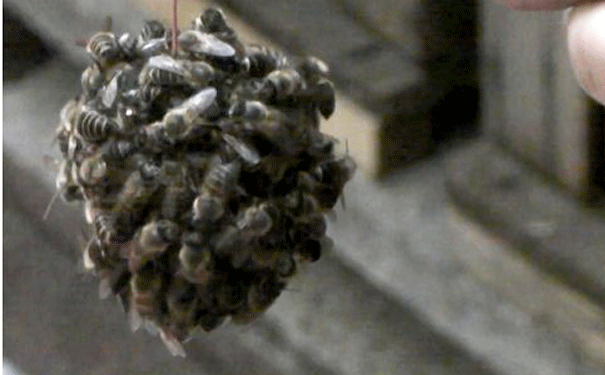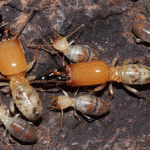
Giant hornets look formidable, but they're no match for 500 bees. Image: Shutterstock
Irritating bees is never a good idea, especially not if they can kill their enemies with their body heat.
Most honeybees use their stingers to attack intruders, but Japanese honeybees seem to have developed a unique way of killing their enemies. They fight back using a characteristic behaviour called “˜hot defensive bee ball formation’.
If a giant hornet comes around looking for the colony’s larvae and pupae, a group of over 500 workers quickly form a hot defensive bee ball around it. This traps the hornet inside, but the fight isn’t over yet.
While in the ball formation, the honeybees vibrate their flight muscles to produce heat. The temperature in the ball quickly rises to almost 47°C, cooking the hornet in 30 to 60 minutes.

The bees surround their enemy and apply the heat. Image: University of Tokyo
Researchers from the University of Tokyo attempted to find out what the mechanism was behind these coordinated attacks, by examining which parts of the brain were active during this formation. To examine the workers involved, they induced the honeybees to form a bee ball around a decoy giant hornet hung on a wire.
Within five minutes, the bees had formed a ball, which could then be removed from the hive and transferred to a beaker. The researchers found that the neurons that make up the higher brain centre were active while the bees are part of the hot ball, reflecting the processing of the thermal stimuli.
And it isn’t one bee ordering the attack; the researchers believe they are acting collectively to combat the intruder.
Source: Plos One






